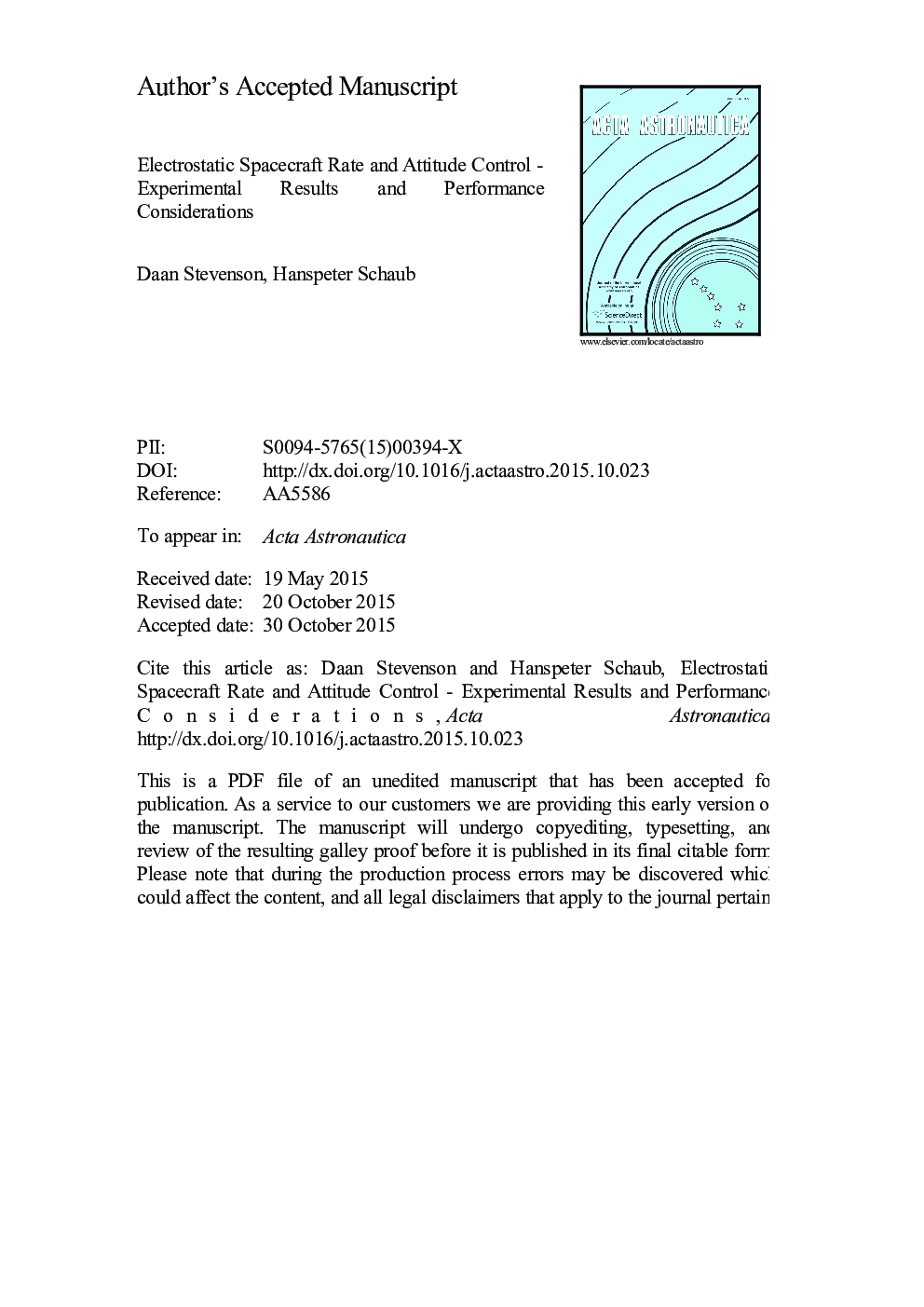| Article ID | Journal | Published Year | Pages | File Type |
|---|---|---|---|---|
| 8056347 | Acta Astronautica | 2016 | 32 Pages |
Abstract
In order to ameliorate the ever increasing space situational awareness risks at Geosynchronous (GEO) orbits, spacecraft rendezvous is desirable for servicing or repositioning operations. When large GEO spacecraft loose station keeping control, they can acquire sizable rotational momenta that imperil proximity operations and docking. Remote electrostatic charge control has been identified as a technology that may be used to safely de-spin non-spherical objects over a period of time. This paper investigates experimental pointing control results, demonstrating how the touchless electrostatic actuation can be used to arrest a tumble and control the heading in a one-dimensional setting. Further, the sensitivity of a representative system׳s de-spin time, required thrust profiles, and system displacement to variations in spacecraft sizes, shapes, and separation distance is considered. While the de-spin time can be reduced by allowing the servicer to vary positions, this comes at a large increase in the relative station keeping fuel costs. Using a non-spherical servicer configuration, rotating to maximize the electrostatic torque, is also shown to reduce the de-spin time by about 25%, but without significantly increasing the fuel requirements.
Related Topics
Physical Sciences and Engineering
Engineering
Aerospace Engineering
Authors
Daan Stevenson, Hanspeter Schaub,
